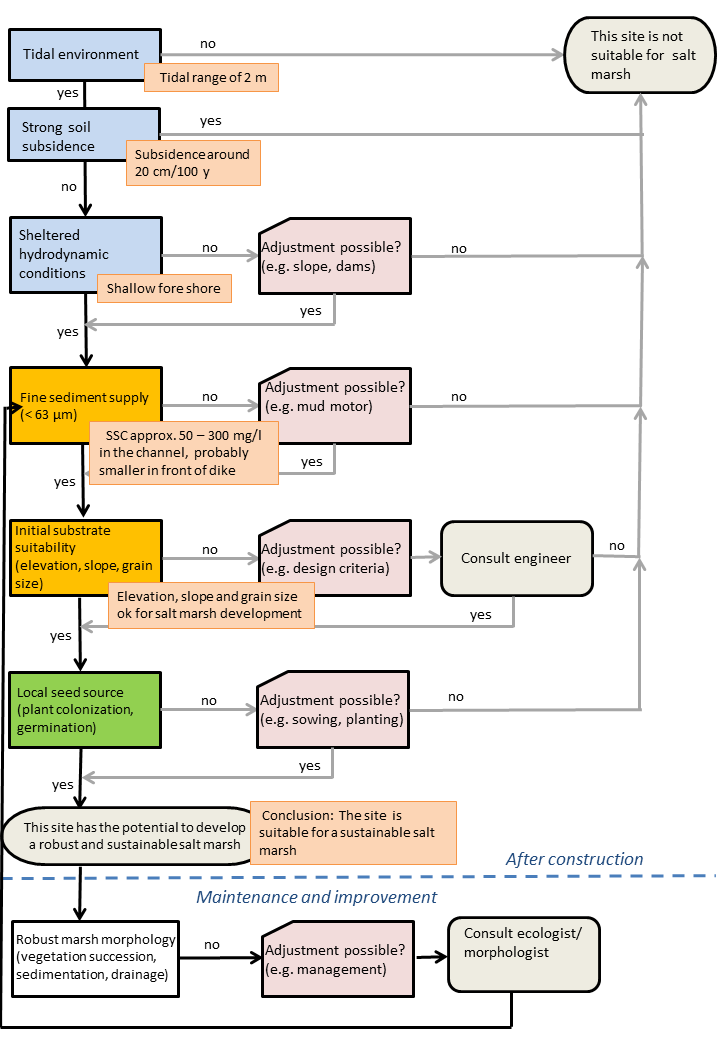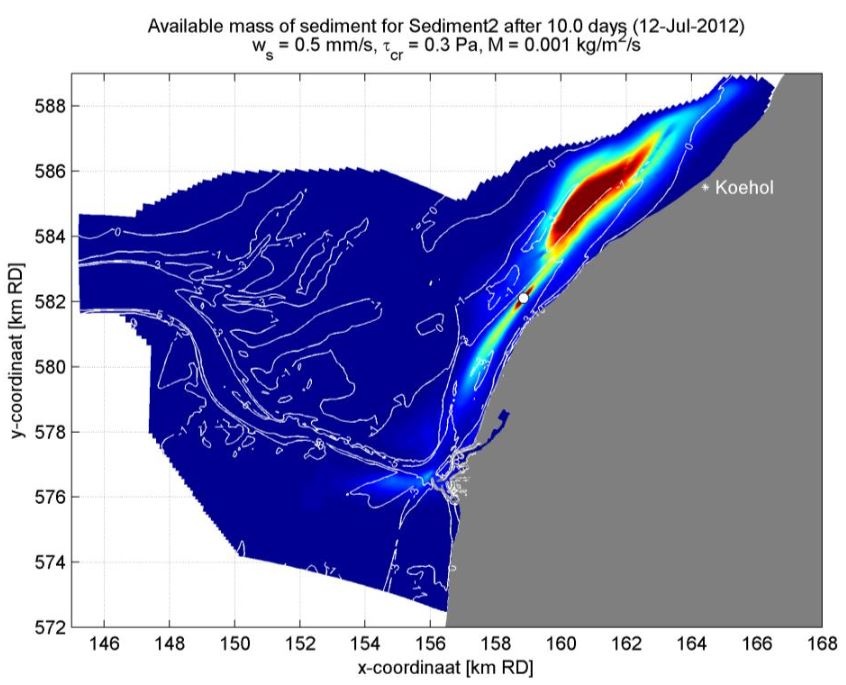Planning and design
A dredging strategy in the form of a flow chart was adopted and improved for the port of Harlingen. Furthermore, model computations have been made to check feasibility / efficiency of the proposed mud motor and to gain insight in the behaviour of mud disposed during flood. Also, a pilot experiment was set up in order to determine the effectiveness of using dredge material for salt marsh development.
Follow flow chart
Harlingen is situated in a tidal environment with no strong soil subsidence. The salt marshes north of Harlingen are sheltered by large areas of intertidal flats. Fine sediments are available from these intertidal flats and an initial gently sloping substrate is present consisting of sandy mud, just above high tide. A local seed source is present as pioneer vegetation and low and high marshes are already present in the neighbourhood. Consequently, the site had potential to develop a robust and sustainable marsh. This can be maintained and improved by adopting a modified and improved dredging strategy of the port of Harlingen using the fine sediments from this source to facilitate salt marsh growth.

Numerical model simulations
Model computations have been made to check feasibility / efficiency of the proposed mud motor and to gain insight in the behaviour of mud disposed during flood. As a first step a numerical hydrodynamic model was run to determine a suitable new disposal location based on the predicted tidal currents. Based on the numerical flow simulations, a preliminary disposal location was chosen in shallow water on the right bank of the tidal gully (the landside of the Kimstergat, west of the Koehoal salt marsh).

The figure shows an example of the plume of disposed mud. The white dot in this plot indicates the disposal location. The simulations show that a large part of the disposed mud is transported in northeast direction and settles in the small water depths on the intertidal flats near the salt marshes, increasing the mud supply to the salt marshes. Computed deposition pattern resulting from 10 days continued release of sediment from the location indicated with a white dot (Vroom, 2015).
Pilot experiment
A pilot experiment was set up in order to determine the effectiveness of using dredge material for salt marsh development. In this experiment, normal maintenance dredging operations with a small 604 m3 suction dredger hopper continue, however, part of the dredged volume is deposited further away from the port than in current operations.
The efficiency of the mud motor in the field was determined by using tracers in the disposed sediment (Vroom et al., 2017). The tracer study helped to identify the destination of the disposed sediment and to determine what percentage of the disposed sediment reaches the salt marshes at Koehoal. A fluorescent tracer was applied with a particle size distribution and behaviour similar to sediment dredged from the port of Harlingen, having a D50 of ~10 μm. After completely mixing the tracer with sediments in the hopper, we expected the tracer particles to be encapsulated in flocs formed by the natural sediments, and thereby behave similarly. This efficiency of the Mud Motor is higher than predicted.
The surface level of the salt marshes at the beginning of the project, before the first Mud Motor disposal, was measured using aerial photos and ground measurements (Veldrapportage Slibmotor T0). In following years, the deposition of mud on the salt marshes is measured at multiple locations. Sedimentation-Erosion Bars for measuring bed height were installed at 22 locations in September 2015, thus before the first Mud Motor disposal. In addition, 19 devices were installed in August 2016 on the mudflats in front of the salt marsh, and 15 devices were installed at a reference location. These Sedimentation-Erosion bars are checked five times per year.
Alongside this project, a fundamental research project ‘Sediment for salt marshes: physical and ecological aspects of a Mud Motor’ is investigating processes relating to the use of a Mud Motor. The aim is to develop the fundamental knowledge needed to understand and quantify the physical and ecological aspects of large-scale mud nourishment operations of this kind for further upscaling and exporting.
